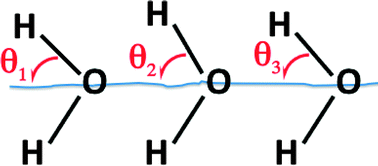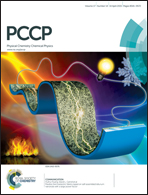Inhomogeneity of the amorphous solid water dangling bonds
Abstract
Amorphous solid water (ASW) is one of the most widely studied molecular systems because of its importance in the physics and chemistry of the interstellar medium and the upper layers of the Earth's atmosphere. Although the global structure of this material, i.e. the bulk and the surface, is well characterised, we are far from having an overall understanding of the changes induced upon chemical or physical perturbation. More specifically, the behaviour of the surface and the immediate sublayers upon mid-infrared irradiation must be understood due to its direct effect on the adsorption capacities of the ASW surface. Small molecules can accrete or form at the surface, adsorbed on the dangling OH groups of surface water molecules. This behaviour allows further reactivity which, in turn, could lead to more complex molecular systems. We have already demonstrated that selective IR irradiations of surface water molecules induce a modification of the surface and the production of a new monomer species which bonds to the surface via its two electronic doublets. However, we did not probe the structure of the dangling bands, namely their homogeneity or inhomogeneity. The structure and orientation of these surface molecules are closely linked to the way the surface can relax its vibrational energy. In this work, we have focussed our attention on the two dH dangling bonds, carrying out a series of selective irradiations which reveal the inhomogeneity of these surface modes. We have also studied the effects of irradiation duration on the surface reorientation, determining that the maximum photoinduced isomerisation yield is ∼15%.


 Please wait while we load your content...
Please wait while we load your content...